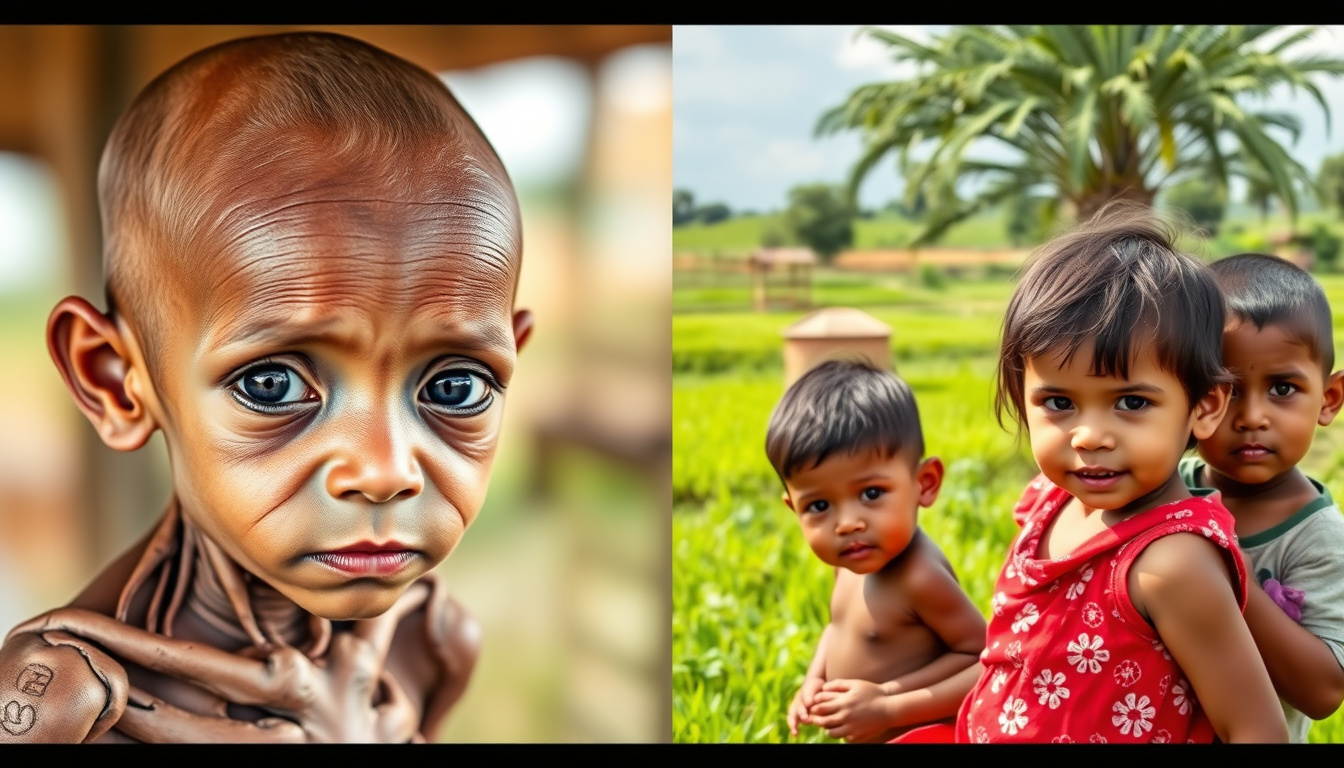Malnutrition is a hard global health problem. It affects millions. The body misses key nutrients or cannot use them. We need to know its causes, effects, and ways to stop it. This article looks at all parts of malnutrition so you can learn and act.
What Is Malnutrition?
Malnutrition means both too few and too many nutrients. In many cases, malnutrition speaks of not getting enough nutrients. Fewer nutrients make the body weak.
The World Health Organization (WHO) counts nearly 1 in 3 people as affected. It can hit any age, but it harms children, pregnant women, and those who are at risk. Seeing the signs and knowing the causes helps us stop the problem.
Causes of Malnutrition
Malnutrition comes from many factors. We see causes in social life, money issues, health, and the world around us.
1. Inadequate Dietary Intake
A poor diet means the body lacks vitamins, minerals, proteins, and fats. Food limits, few kinds of food, or food customs that rule out some items cause this lack.
2. Disease and Infections
Long-term sickness like diarrhea, tuberculosis, and HIV/AIDS stop the body from using food well. Repeated sickness weakens the body more, especially in children, by reducing hunger and how food is used.
3. Socioeconomic Constraints
Low income holds families back from buying good food. When money is small and food is expensive, gaps in nutrients grow. A lack of food education adds to the problem.
4. Poor Sanitation and Hygiene
Unsafe water and bad hygiene let germs spread. These germs stop the body from getting food benefits and make nutrient gaps last.
5. Food Insecurity and Environmental Factors
Climate shifts, natural disasters, and conflicts break food systems. When farms stop or food markets close, the result is fewer foods and growing malnutrition.
Effects of Malnutrition
Malnutrition changes health, brain growth, and work life. Here are some main results:
1. Impaired Growth and Development
In children, malnutrition can slow growth, delay brain work, and reduce study skills. The harm lasts long and can cut school and work chances.
2. Increased Susceptibility to Disease
When the immune system is weak, the chance of sickness grows. When sickness comes, it makes nutrient gaps even wider.
3. Higher Mortality Rates
Severe malnutrition, mainly in children under five, causes more death. WHO data shows that malnutrition plays a part in many child deaths worldwide.
4. Maternal and Reproductive Health Issues
Women facing malnutrition may have hard times during pregnancy and birth. The strain hits both the woman and her baby.
5. Economic and Social Impact
Malnutrition makes work less productive and drives up costs in health care. This slows down progress in a nation.
Prevention and Management Strategies
Stopping malnutrition needs many strong steps. These include policy making, community work, health services, and personal behavior changes. See the methods below:
1. Ensuring Food Security
- Give people a range of good foods.
- Back strong local food systems.
- Use social safety nets and food support plans.
2. Promoting Maternal and Child Nutrition
- Support breastfeeding for the first six months.
- Give extra vitamins and minerals like Vitamin A and iron.
- Back care before and after birth to keep nutrition strong.
3. Improving Water, Sanitation, and Hygiene (WASH)
- Put money into clean water and safer sanitation.
- Teach people safe hygiene routines.
- Lower sickness by improving hygiene in homes and communities.
4. Boosting Healthcare Access
- Check for malnutrition in regular health visits.
- Treat health issues without delay.
- Give advice on food and healthy habits.
5. Putting Policy and Community Programs in Place
- Write down strong national plans that follow WHO rules.
- Run campaigns that point out balanced diets.
- Work with local leaders to fix local food and health problems.
A Sample Approach to Combating Malnutrition:
- Look at local needs for good food.
- Make it easier to get nutrient-rich food.
- Teach families about eating well.
- Keep an eye on growth and nutrition.
- Strengthen good health care and safe water.
Recognizing and Addressing Malnutrition
Finding malnutrition early stops deeper harm. Health workers should check for weight loss, tiredness, slow growth, and many infections. Community tests can show who needs help soon.
FAQ: Understanding Common Questions About Malnutrition
Q1: What are the main causes of malnutrition?
Malnutrition grows when the body gets too little food, illnesses block nutrient use, money troubles reduce food choices, bad hygiene spreads germs, and the environment fails food supply.
Q2: How does malnutrition affect children?
In children, malnutrition can slow growth, delay brain work, open the way for more infections, and even lead to death.
Q3: What are effective ways to prevent malnutrition?
Making sure there is enough food, supporting pregnant and new mothers and young children, improving water and sanitation, widening health care, and running community programs work well.
External Authority and Further Reading
For a detailed look at malnutrition, including global facts and health plans, visit the World Health Organization’s resource on nutrition and malnutrition here.
Conclusion: Take Action Against Malnutrition Today
Malnutrition is not just a health problem; it stops people from growing and working well together. Knowing its causes, effects, and fixes helps build strong, healthy lives. Support local food projects, work for better water and safe spots, and share tips on healthy eating. Each step can bring change. We all deserve to feel well and have a bright future.



